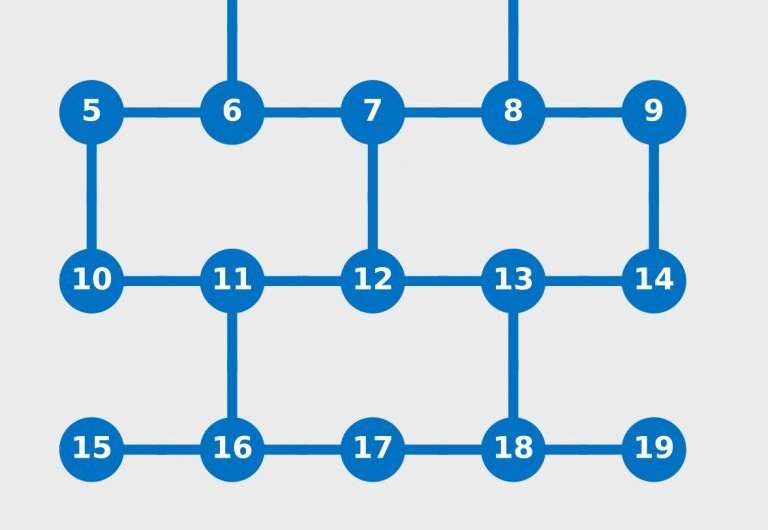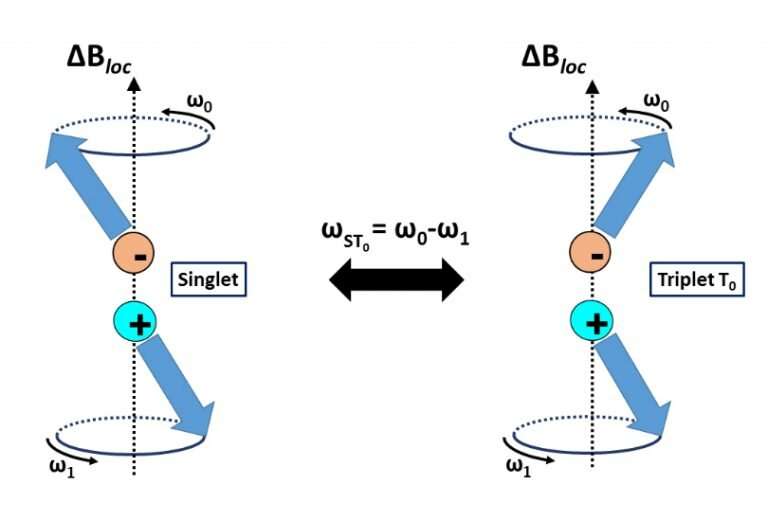Quantum computers flip the script on spin chemistry

To build cheaper and more efficient sustainable energy options, we need to know a lot more than we currently do about the chemical reactions that convert solar energy into electricity. One of the best ways to do that is through computer models that simulate complex molecular interactions. Although classical computers have served this purpose well over the past few decades, we explain in a new research study the special qualities of quantum computing that will help researchers advance technologies for solar energy conversion, artificial photosynthesis and photovoltaics to an entirely new level.
Our study, "Simulation of Quantum Beats in Radical Pairs on a Noisy Quantum Computer," details how IBM Research and the University of Notre Dame scientists—with help from students at Georgetown University, DePaul University, Illinois Institute of Technology and Occidental College in Los Angeles—used a cloud-based IBM Quantum computer to simulate how a chemical reaction outcome is controlled by the time evolution of the entangled state of the two reactants, and how this spin chemistry phenomenon is affected by the gradual loss of magnetization and dephasing caused by thermal fluctuations.
Spin chemistry is a subfield of chemistry that deals with magnetic spin effects in chemical reactions. It connects quantum phenomena such as superposition and entanglement to tangible chemistry parameters such as reaction yield (the amount of whatever a chemical reaction produces). With a quantum computer, spin chemistry allows us to directly simulate some dynamic chemical processes, basically the kinetics of chemical reactions. Spin effects in radical pairs play an important role in processes underlying solar energy conversion.
Notre Dame researchers had for years used classical computers to study spin chemistry. Simulations created using those computers, however, required the introduction of artificial noise to try to realistically mimic chemical reactions. In 2018, the researchers jumped at the chance to create more detailed spin chemistry simulations using IBM's publicly available 5-qubit quantum computers. And by April 2019, Notre Dame had joined the IBM Q Network, which offered them access to IBM Quantum computing systems and expertise they sought to carry out their spin chemistry experiments.
Working together, our team of scientists used a quantum computer to simulate how spin effects control the reaction yield. In this case, two possible reaction products were molecules in two different types of excited states—either singlet (with spin 0) or triplet (with spin 1), with each containing different amounts of energy. In the system we studied, experimental data published by V.A. Bagryansky's group—of the V.V. Voevodsky Institute of Chemical Kinetics and Combustion—is expressed in fluorescence or phosphorescence, which helps us better understand how a reaction works on a molecular level. In this system, the molecules' signal loss was measured using fluorescence.

The molecules' loss of magnetization due to electron spin relaxation was analogous to magnetic tape losing its ability to store information due to excessive heat. Magnetic media—largely replaced by flash, but still used for archival storage—is made of islands of magnetic material. For a long time, magnetic media manufacturers struggled with their equipment running at room temperature or hotter because heat weakened the magnetic signals over time. Fast electron spin relaxation can likewise diminish the efficiency of spin transport in solar energy conversion applications.
Our experiment's success was a two-way street, enabling us to study quantum computer behavior as well as spin chemistry. Unlike most experiments on quantum computers, which look to leverage the technology's incredible potential by taking advantage of the short lives of qubits—measurable in microseconds—we sought to slow down the calculations sent to our two-qubit circuits. That enabled us to look in detail at what the gates and qubits were doing over many seconds and even minutes.
Normally in quantum computing, someone submits a program, it runs, measurements are made, and the program stops. Instead, we used OpenPulse, a programming language within the Qiskit open-source quantum-computing framework, to specify pulse-level control on the quantum device. We slowed down the calculations so we could see the quantum computer's noise processes. Noise is a natural property of qubits, but limits the number of calculations they can perform and introduces errors to the final results. As we continue our work in this area, we will be able to contribute to the knowledge of those studying how to mitigate such noise and create more robust and less error-prone quantum computers in the future.
Our research serves as a new use case for quantum computing. We showed that qubit noise, typically an impediment to quantum computer use, can actually be an advantage over a classical computer for chemical simulations.
Looking ahead, we hope that OpenPulse will become more of a tool to engineer noise and change quantum signals. The greater control OpenPulse can offer, the better future experiments can simulate—and use—noise to better understand complex chemical phenomena such as artificial photosynthesis and solar energy conversion.
More information: Noisy Simulation of Quantum Beats in Radical Pairs on a Quantum Computer. arXiv:2001.00794v1 [quant-ph]: arxiv.org/abs/2001.00794
Provided by IBM



















